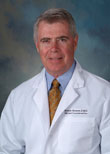|
Home | Ernest Syndrome Headache | Temporal Tendonitis Headache | Splenius Capitis Neck Pain TMJ | FAQ | Contact Us |
|
Frequently Asked Questions about Facial PainWhy am I having headaches or face pain?Answer - There are several reasons for headache and face pain. For example, injury to a muscle or ligament or to the jaw joint can be a cause. Also, a person my suffer muscle strain or sprain and at the same time suffer a migraine condition. How do I know if my temple of face pain is muscle sprain or migraine?Answer - Two tests are often used: Local anesthetic is used to numb muscle sprain pain, whereas an oral migraine medication is used to test for migraine. And, sometimes a person may suffer both conditions. Why is a TMJ bite plane recommended for jaw joint clicking, popping and headache?Answer - Often a TMJ appliance (bite plane) is worn on the teeth to improve the blood flow to the joint and to the temple muscle, and to relieve the corresponding pain to the jaw joint, temple and face. Is this treatment effective?Answer - Yes, in many cases it is that simple. Your web-site lists several muscle, tendon and ligament injuries. Can they be repaired or corrected?Answer - Yes, and the treatment used is designed to be proportionate. Meaning a mild muscle or ligament sprain or strain can be treated with the application of local anesthetic and cortisone, often very effectively. A more advanced injury can be treated with radiofrequency ablation. This therapy renders the injured muscle, tendon, or ligament fiber unable to transmit a pain impulse. And, this method of therapy is usually painless and offers no side effects. The net result is reduced pain or no pain at all in about 80% of cases treated. Is Temporal Tendonitis a muscle injury?Answer - Yes it is, and there are many causes from whiplash to general anesthesia to prolonged opening of the mouth. We call many of these causes “an accident waiting to happen”, meaning that the tendon is already weakened and the procedure done triggers a clinical condition, where the face, cheek, jaw joint or temple begins to hurt and simply gets worse in intensity and frequency. Is the ligament associated with pain below the ear known as Ernest syndrome?Answer - Yes it is, and the pain over time spreads to 6 or 7 different areas in the face, ear, jaw, cheek, eye, temple and even the lower teeth. Is the treatment for these muscle and ligament injuries painful?Answer - No, and there is also no need to be put to sleep! If I decide that I may have Temporal tendonitis, Ernest Syndrome, or some other pain condition, what do I do to find out if it is true?Answer - Call the office. We recommend that you spend 3 to 4 days with us to first determine what may be wrong with you, decide with you the choice of treatment, and then treat the problem or problems. It is not unusual for a patient to suffer 2 or more conditions at the same time. We usually schedule one to two new patients per week so that we have the necessary time to be as effective as possible for you. We do not have people waiting in multiple rooms to be seen. Will insurance pay for my exam and treatment?Answer - Our experience in this situation regarding insurance goes back to the early 1980’s, therefore the patient pays for their exam and treatment at the time care is given. If I have Radiofrequency surgery (thermal ablation ) what can I expect following surgery?Answer - Most patients have mild soreness for 7 to 10 days following surgery. We recommend that after 15 days they should be able to return to normal activities such as chewing and opening the mouth. The radiofrequency procedure intentionally creates a small scar at the site of injury. A s this effectively prevents further transmission of painful impulses. We usually prescribe an antibiotic to prevent infection, and a cortisone medication to prevent swelling and resulting discomfort from swelling. Actual pain relievers such as Motrin or Tylenol are usually adequate for any residual discomfort.
"To relieve pain is to do God's work." |
Edwin A. Ernest, III D.M.D.
Disorders such as Ernest Syndrome, Temporal Tendonitis, TMJ Neuralgia, and Splenius Capitis Muscle Syndrome, and his innovations with radiofrequency surgery to treat his discoveries, have caused Dr. Ernest to be acknowledged as a recognized authority among medical and dental professionals regarding his discoveries. His work is referenced in Neurology, ENT Medicine, Plastic & Reconstructive Surgery and Neurosurgery programs and articles, dental literature, and is referenced on the internet in a variety of languages, and through Pub/Med, the influence of which is world-wide. |
|
Dr. Ernest was recently honored to be selected as a department head for a premier medical pain management journal, rated by its physician readers and the #2 favorite publication in the field of chronic medical pain management. Practical Pain Management Journal asked Dr. Ernest, a dentist, to head the Head & Neck Pain Department section of the Journal because of his numerous pain management contributions to the fields of medicine and dental medicine. His Journal Articles include: Splenius Capitis Muscle Syndrome Temporal Tendonitis: Migraine Mimic Head and Neck Pain (November/December 2006) |
|

